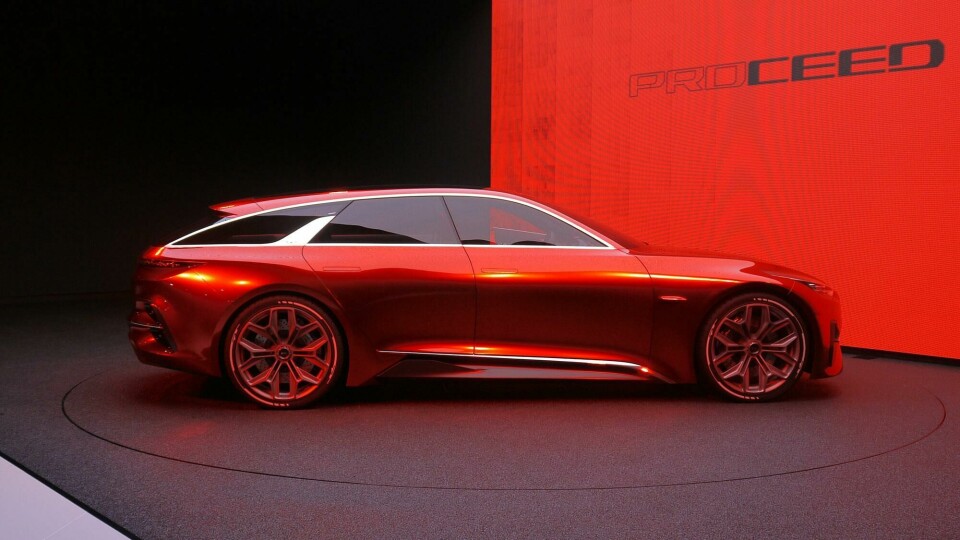
Geneva 2018: Kia’s Gregory Guillaume on the third-gen Ceed
The chief designer of Kia Motors Europe Gregory Guillaume on their newest addition
CDN spoke to Gregory Guillaume, chief designer at Kia Motors Europe, about the third generation Ceed which was revealed at Geneva this year.

CDN: The new Ceed represents an important new model for Kia in Europe. How did you approach its design?
Gregory Guillaume: The first generation Ceed was a good first step for us. It showed that we understood the market and customer needs, and that we were serious enough about the European market to develop a car specifically for it. But I always felt the first one was lacking on the emotional side; it was a bit cold.
With the second generation we really tried to correct that, so we used a very cab-forward design with a lot of wedge on the side, which is the kind of design language you use to grab attention. It was a “Look at me, I’m sporty!” design.
For the third generation, we worked with a completely different type of proportion. The belt-line is a lot more horizontal, it’s more laid back. We’re trying to show a long bonnet, trying to push the cabin onto the rear wheels. That gives a feeling of self-confidence: it’s athletic, but svelte.

CDN: Did you have a particular demographic in mind?
No, the C-segment is so wide in Europe. Anybody drives those cars, it’s really difficult to pinpoint. You just have to make sure it’s true to your values.
CDN: The new Ceed’s surfacing is very plain. Doesn’t that risk it becoming anonymous?
We aimed to keep things clean and simple to understand. We spent most of our time on proportions and the few lines that are there are memorable. If you don’t have the proportions, you need to throw other things onto it to try to catch the attention. But if you have the proportions right you don’t need to add much.

CDN: As a car for Europe, presumably Ceed was always going to be designed in Frankfurt?
Ceed or any car that is developed only for Europe will be completely developed in Europe, with internal competition in Europe – all the proposals are done in Frankfurt. For a car sold worldwide we’re usually in competition with the other studios.
Typically we’ll have five or six projects running at the same time, at different stages. Some at the very early stage and some more finalised.
The way we structure our team, everybody has the ability to work on anything. I don’t have dedicated teams for advanced design or facelifts or wheels. We’ve got a very open layout and everybody gets the chance to work on anything, and once someone wins a competition the others support them.

CDN: Does the new Ceed have a new platform?
Everything is new. We kept the same wheelbase, because we already had quite a big wheelbase for the segment and we felt it was right. But apart from that we changed pretty much everything. The car is a lot lower – almost an inch lower – and quite a bit wider, within the same length.
We spoke with the engineers and asked them how much we could move the cowl point rearwards, and we found ways to do it. That was an initiative from design – the cab rearward and long bonnet shape was where we felt this car should move to.

CDN: With design handled in Frankfurt, did that that make negotiations with engineers in Korea more difficult?
We have a top management presentation every month and we send all our clay models to Korea. I go there regularly; I meet the people over there, my counterpart in America, and Peter [Schreyer, head of Kia and Hyundai design]. It’s important that we don’t become isolated in Europe.
Kia’s studios in California and Europe aren’t treated like satellites. We are a core part of the creative process, not just a nice thing to have.

CDN: Did you settle on the final themes early or did the Ceed have a more complex journey?
The new proportions were set very quickly, so all the proposals went that way. There was one that was particularly sexy and we took that, and another with a bit more edge. They grew side by side for a while and then – they didn’t merge but we found things from each one.
The sexy one had a really good stance but lacked a little precision. When you look at the car you see athleticism, sportiness but it looks very precise as well, and the second proposal had that. The magic was to bring them together which is not always easy because you can bring two things together and have nothing.

CDN: How does the Proceed concept we saw in Frankfurt last year relate to the Ceed hatch and station wagon launched at Geneva?
Proceed is a member of the Ceed family and an important one as well. The problem is that three-door cars are not getting attention or love from customers any more. It was clear we had to look for something else – the numbers weren’t coming together and we couldn’t justify a new three-door. But within the Ceed family, Proceed carries Kia’s values loudest and strongest: young at heart, sporty, dynamic. We couldn’t just erase that.
So if three-doors are no longer what the customer wants we have to reinterpret those values in a product that makes sense for the customer. So we did an internal study and looked for different body styles that would fit within the Ceed family and play the role that Proceed always played. We came up with different solutions and Proceed Concept was one of them: a sporty type of five-door hatch.
We also had other answers to that question, and we’ll have to see what comes out…



